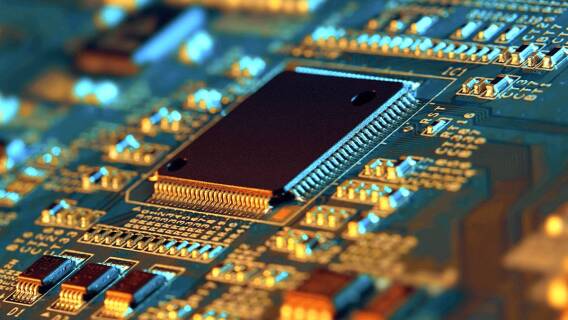Silicon is still king in the world of semiconductor stocks: 95% of chips produced today are based on a wafer fabricated out of silicon. But silicon has hit a wall: chips have gotten so small and required to transmit so much electricity, that silicon chip efficiency declines. Simply: they get too hot to cool down and the silicon itself gets too brittle to tolerate hot, high-powered conditions for very long.
That’s a problem because most of the great technological advances rolling out across the globe are in applications that generate high heat, requiring chips that can transfer large amounts of electricity for long periods of time in sometimes rigorous conditions. What are these? Mostly Greentech mainstays, such as renewable energy including solar and wind systems as well as EVs and EV chargers. There also is a very sizeable market for chips with characteristics not optimally provided by silicon in 5G mobile phone networks. These industries are turning to two silicon alternatives: silicon carbide (SiC) and gallium nitride (GaN).
Silicon carbide chips were pioneered in the 2000s by NASA, which knew it had to develop chips to handle blast-furnace hot conditions like spacecraft. Under NASA’s work, SiC chips were found to be able to operate continuously at 500 degrees Celsius (932 Fahrenheit) in a smaller form factor than silicon-based chips.
[text_ad]
Gallium nitride came about as a medium that can generate white LED light. A 1990s innovation, it won the 2014 Nobel Prize in Physics for the Japanese scientists who developed it. Because GaN was also found to handle high voltage at a smaller size very efficiently, it too began to replace silicon at the start of the last decade.
Silicon isn’t going away – it’s still cheap and works fine for run-of-the-mill consumer tech products. But renewable energy and EVs are the future of power and mobility – and everyone wants faster cell phone networks. We’ve identified a number of semiconductor stocks that will benefit from the SiC/GaN shift. Here are three to consider buying now.
3 SiC/GaN Semiconductor Stocks
Onsemi (ON) has long been a top supplier of chips to automakers, offering some 10,000 varieties under its prior name, On Semiconductor. But with such a large product slate, it was often a commodity business, meaning financial results – and the stock – rose and fell on the broad semiconductor market health. A new CEO, Hassane El-Khoury, took over at the end of 2020 with the aim of getting Onsemi out of the boom-bust cycle and moving it to higher-margin, premium-priced chips, primarily SiC. Onsemi has been busily unloading silicon product lines that have gross margins below El-Khoury’s 48% to 50% target. That’s almost done. The other part of the company’s focus has been embracing SiC as the path to profitable growth. Onsemi will take ownership of a new foundry in upstate New York by year’s end, where it will produce large, 300-millimeter wafers to efficiently make SiC chips. Last year it secured a lot of SiC supply and technology by buying GT Advanced Technologies, positioning itself to make a lot of chips with the ability to sell any excess SiC to other fabricators.
The SiC business will primarily come from automakers, with the company estimating every EV customer will use about $700 of chips per car, well above chip sales into traditional vehicles. And Onsemi still sells its better-margin silicon-based chips. In total, it should post $2.1 billion in sales this quarter across all lines, and $8 billion for the year, with about $5 a share in net income. That should only improve as SiC sales grow and the New York foundry kicks into full production.
Wolfspeed (WOLF) is another chipmaker laser-focused on SiC. In fact, SiC chips are so promising, they spurred a sea change in its business plan two years ago. That was when it was named Cree, long a dominant maker of LED lighting. Management decided to sell off the lighting business and focus on SiC (and to a lesser extent GaN), renaming itself Wolfspeed. The move is paying off: already management has compiled a whopping $35 billion order pipeline for SiC chips extending out toward the end of the decade. Two-thirds of the orders are from automakers for their switchover into EVs. Not only is the backlog massive compared to prior year revenue of about $800 million, it has the company quickening its pace to meet future demand that could grow even faster. Last month it announced it will build the world’s largest SiC wafer manufacturing plant, in North Carolina. That will supply its own central New York SiC fabrication plant that is fully automated. Like Onsemi, it’s taking on some extra 2022 capital costs to get into position to boost production next year and beyond but will still post a full-year profit.
Early this year, management told investors its 2026 sales would be $2.1 billion, driven by SiC. They just updated that, saying demand is so strong that 2026 will be 30% to 40% higher than the earlier estimate. That would be nearly four times their most recently completed fiscal year and a big win for this semiconductor stock.
Navitas Semiconductor (NVTS) is a chipmaker primarily focused on GaN, which it has been supplying to consumer product makers focused on cell phones, tablets and fast chargers for handheld electronics. The total GaN market is small – just $20 million worldwide in 2021 – but fast growing, projected to hit $2 billion by 2025. GaN is cheaper and easier to work with than SiC earlier in the manufacturing process. In operation in its end markets, there isn’t a great deal of apparent difference in performance from SiC– a belief reinforced by the fact Navitas inked a deal with an undisclosed company for EV chargers worth potentially $400 million by decade’s end. Still, with Navitas, you don’t have to make a call on if SiC or GaN will reign supreme, because in August it bought SiC maker GeneSiC, a profitable, previously private business. Of the three semiconductor stocks here, Navitas is easily the smallest – it’ll make revenue of about $10 million in the third quarter, including a partial contribution from GeneSiC. That also makes it the most volatile.
I booked a 127% profit on Navitas last year, exiting ahead of a bear market sell-down to a recent price of $5. The culprit for that is valuation: with a $600 million market cap, that’s roughly 12 times trailing year sales for the newly enlarged business.
[author_ad]

